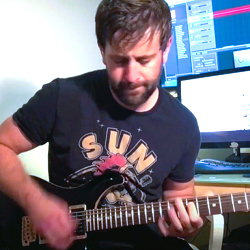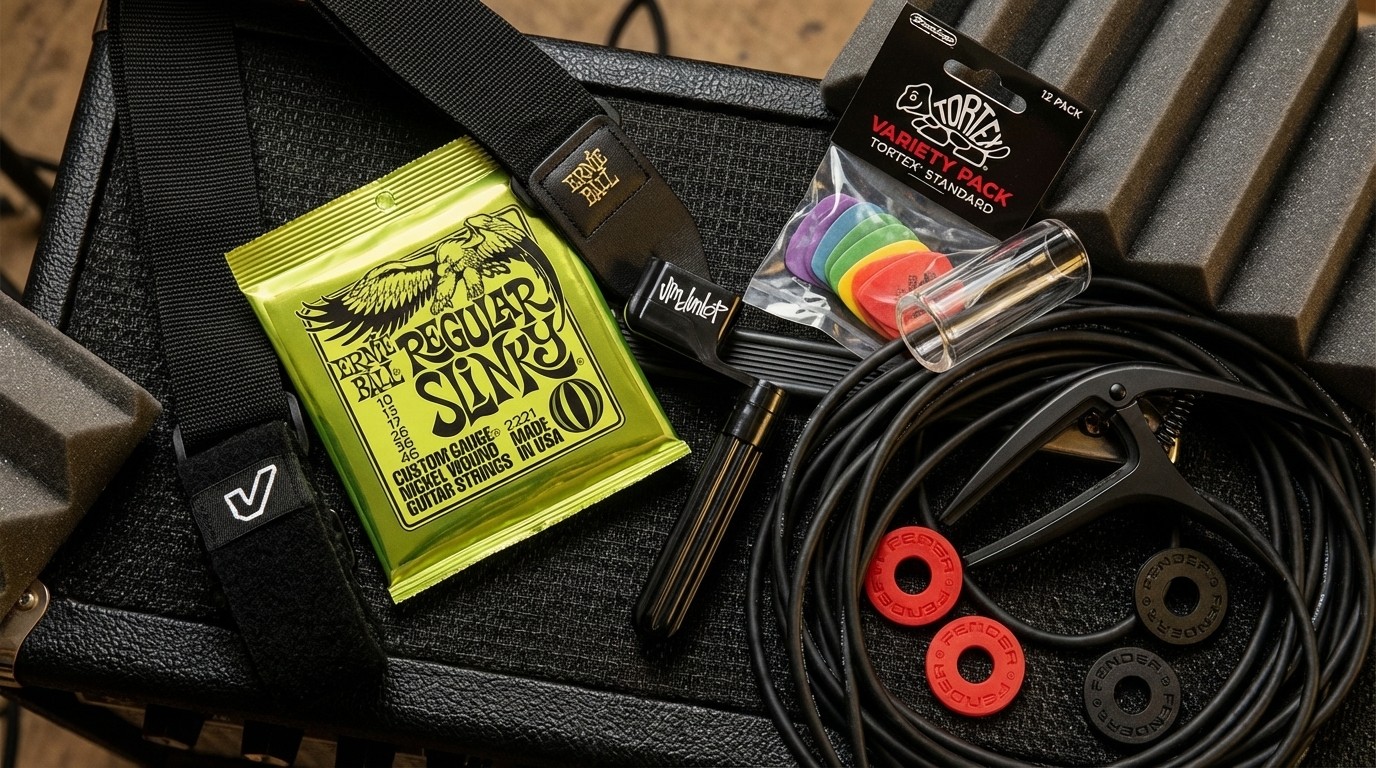Guitar Chalk Sessions: Modding Simple Chords, Part 1 (G, C and D)

Today I want to show you how to take simple guitar chords (perhaps some of the first you ever learned) and put a new spin on them.
I want to make them more interesting.
Kind of how I felt when I bought a used PRS guitar that was new to me, having new chords to work with can be similarly refreshing and exciting.
Because I think most of the chords that we’ve learned as part of the CAGED system tend to become really boring. This is especially true if we never learn other variations of those chords. In this lesson, I want to cover some of those variations.
In other words, we’re going to mod our boring chords.
Take the G major, for example. The formal version of that chord looks something like this:
If you were taught this chord by a guitar teacher or in a formal classroom setting, this is the way they would teach you to play it. Now, this is not to say you shouldn’t ever learn or use this version of the chord. There’s certainly nothing wrong with it, and a lot of what I’m showing you will be a matter of preference, whether or not you like certain voicings of chords more than others.
All the latest guitar news, interviews, lessons, reviews, deals and more, direct to your inbox!
But, if you’re like me and you think this voicing is just a little dull, here are a few ways you can spice it up.
Mod #1: Open G Major
For our first “new” voicing of the G major chord, we’re going to keep our low root note at the third fret and our open notes at fourth and third string. However, the fifth and first strings should both be muted.
Here’s the diagram you’ll end up with:
This voicing will sound a lot cleaner than the original, mostly because we’re limiting the chord to two sets of the same notes, one octave apart.
• Two D notes
• Two G notes
Compare that to the note lineup of the original G major chord: G - A - D - G - B
Again, either one is a valid approach. This is a preference issue and not a matter of best practices. Having said that, I’ll take this voice over the original, almost every time.
Let’s move onto another chord.
Mod #2: Open C Major
You might notice that the C chord can be handled exactly like the G by simply moving the root note from the sixth string to the fifth while remaining on the third fret. Once again, we’re leaving out the major third interval that would otherwise be included on the second fret. This helps to open up the rest of the shape.
Also, for this particular chord, I like to let the high E ring out.
It adds a nice little accent to the tone, which you can adjust by playing other notes on the high E, which I’ve highlighted in the diagram with faint circles.
Within this diagram, you’ve got one chord with four different ways to accent it via the high E string.
We can do the same thing by adding an accented note on the third string:
Obviously, the same tactic can be applied to the G chord as well.
Let’s move on and look at a couple different voicings for the open D major.
Mod #3: Open D Major
The formal version of the D major is functional, though we should start with the triadic form of the chord and omit the note on the high E that you’ll usually see in chord books and instructional material.
Here’s the first form we’ll cover, which should be familiar to you:
There are a number of options we have to mod this chord.
First, we can open up the two smallest strings (the high E and B) and use those strings to add accent notes. In other words, we’ll keep our root D and the perfect fifth interval at the second fret, then use intervals on the high E and B to flavor up the chord.
Here’s a diagram that shows you your options:
How you choose to arrange these notes is complete up to your own creativity.
The point is to show you that you’re not shackled to that original D major shape. Whenever you hear “d chord” or see a D on a chord sheet, you don’t have to automatically default to the former shape.
In fact, you could even move this entire pattern up to the seventh fret, where you could use the pattern in the same way.
As long as you’re in the key of D, this approach will work.
What you can do with new chord shapes
The advantage of having all these different voicings at your disposal is that they make changing guitar chords much more interesting, both for the player and the listener.
It gets you away from strumming through the same familiar chords over and over again.
That alone is worth the time invested.
Arpeggios
Furthermore, you can use these new chords to develop more unique arpeggios and even get into some lead guitar work.
Arpeggios take on a new life if they’re played on the higher frets. They sound more pronounced, clear and have a chime-like quality that sounds really nice, particularly on a solid or semi-hollow body electric guitar with a clean tone.
But, you can’t really take advantage of that tone unless you can work with your chords and discover those more dynamic voicings.
Progressions
While there is some chord progression theory involved with this material, it’s mostly a matter of having alternative chording options that make our progressions more dynamic and appealing.
This is especially true when you consider that the task of an electric guitar player is to flavor music and not necessarily to provide structure. As a result, even our structural playing should have an eye towards adding some kind of twist or flavor to what is already there.
It’s hard to do that when you only know one type of G chord.
The morale of the story is, don’t stop with one type of any chord. Learn new voicings and take the time to expand on all the basic shapes.
Check back next week when we cover modding the E and A chords.
Robert Kittleberger is the editor of Guitar Chalk and a staff writer at Guitar Tricks. You can get in touch with him here or via Twitter and Facebook.
Flickr Commons Image Courtesy of Kmeron
Bobby is the founder of Guitar Chalk, and responsible for developing most of its content. He has worked with leading guitar industry companies including Sweetwater, Ultimate Guitar, Seymour Duncan, PRS, and many others.

